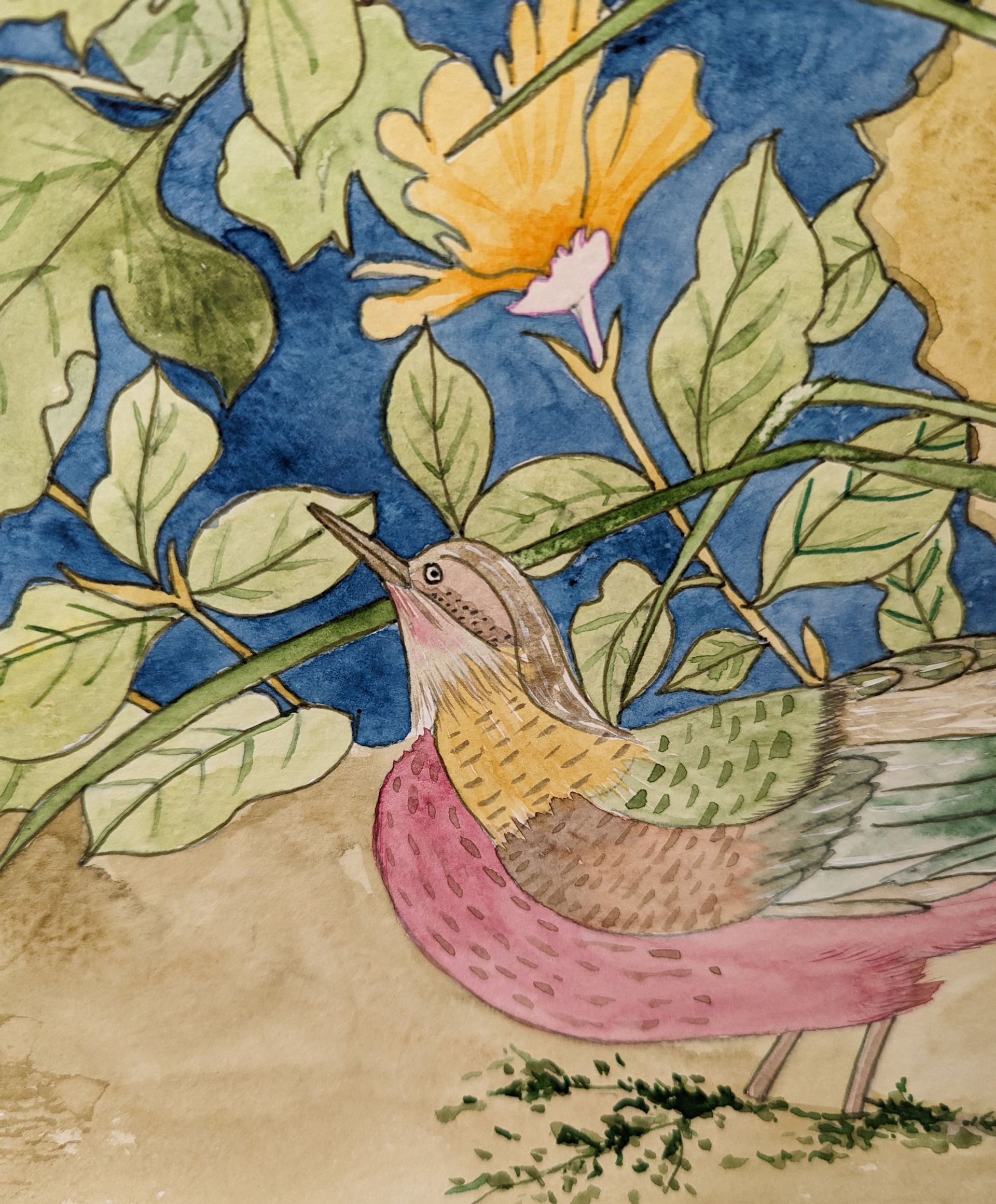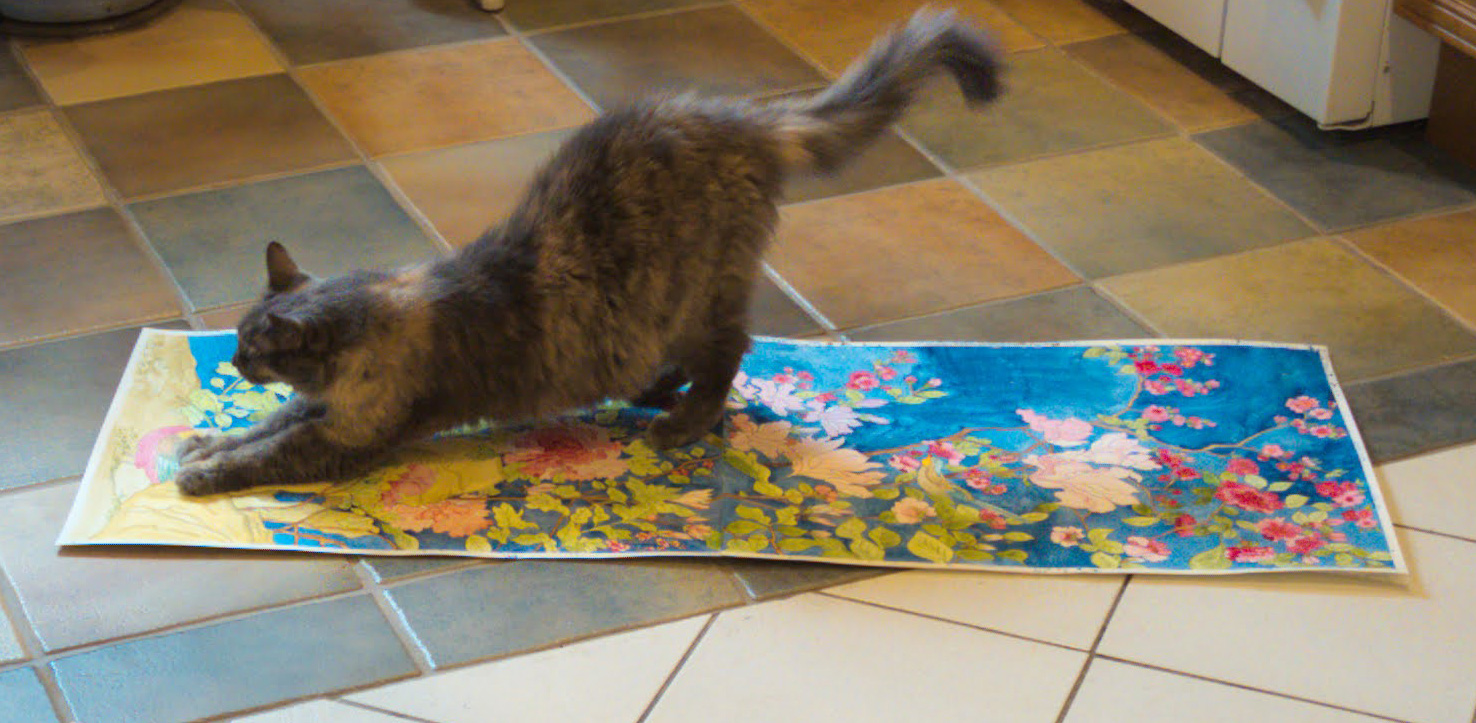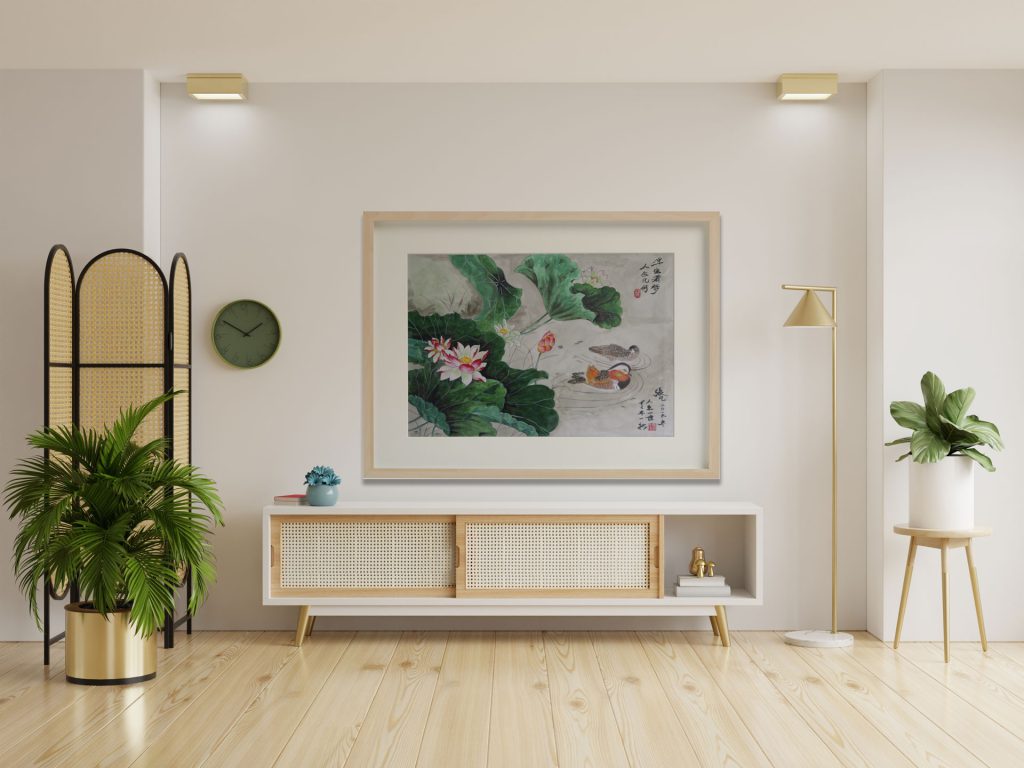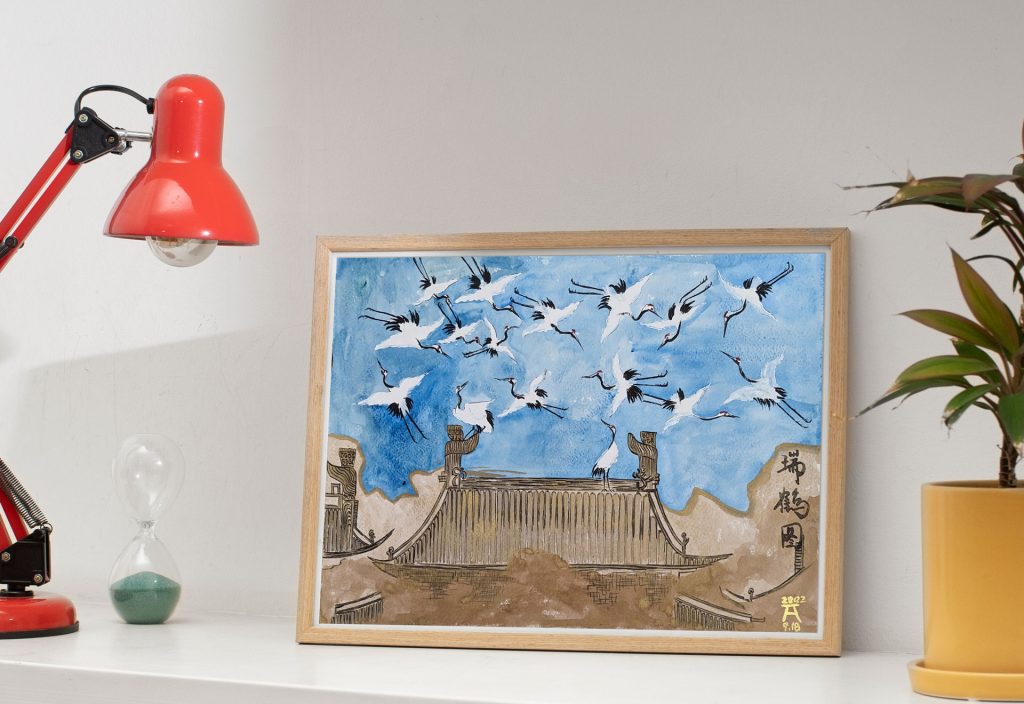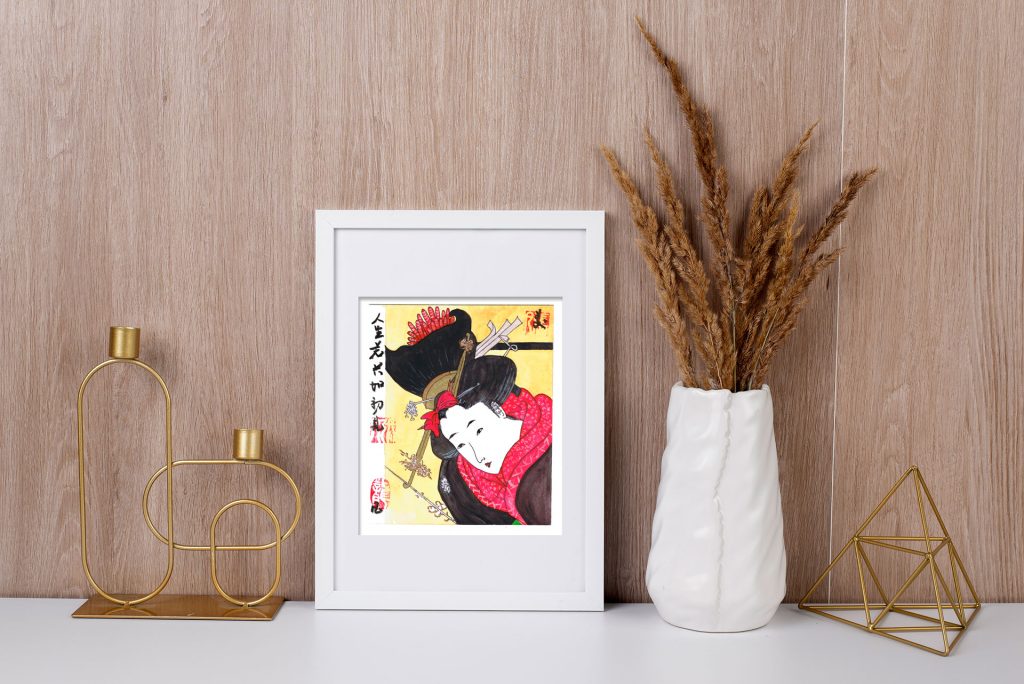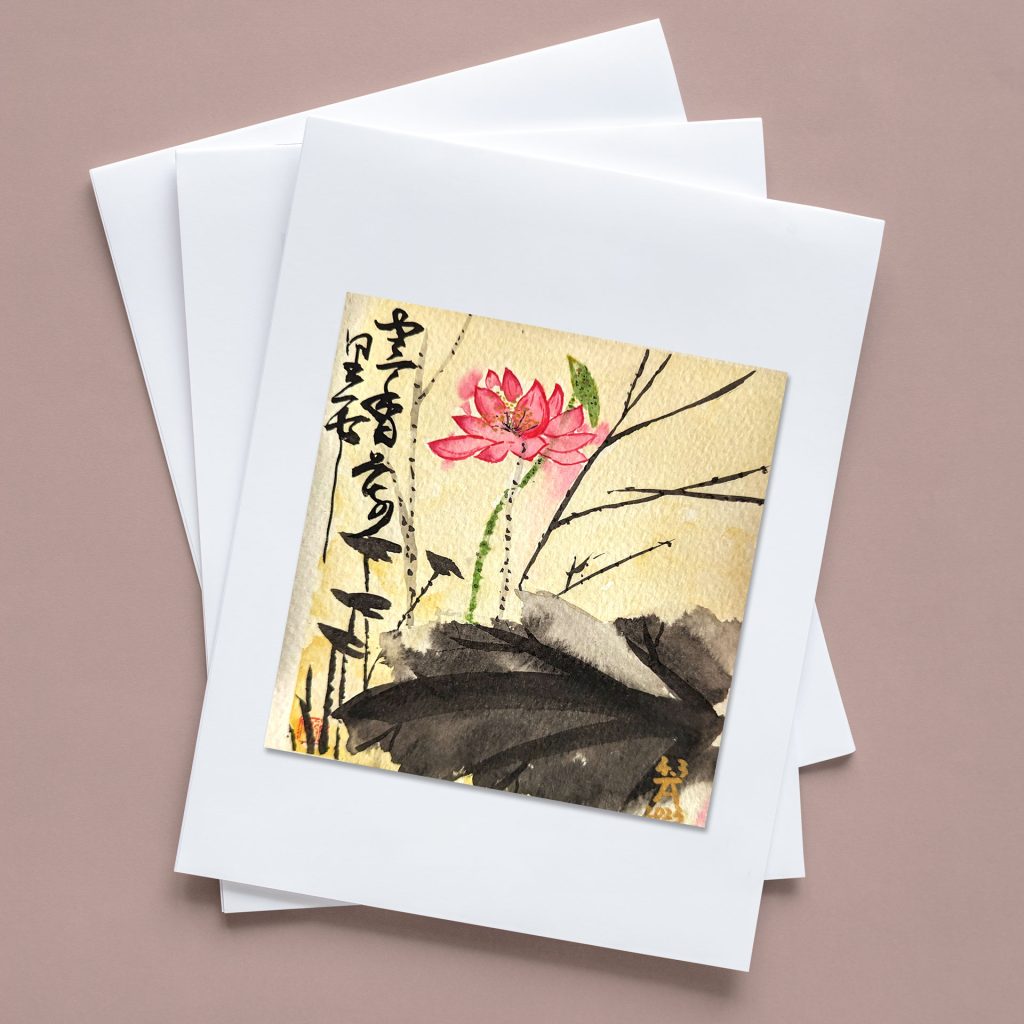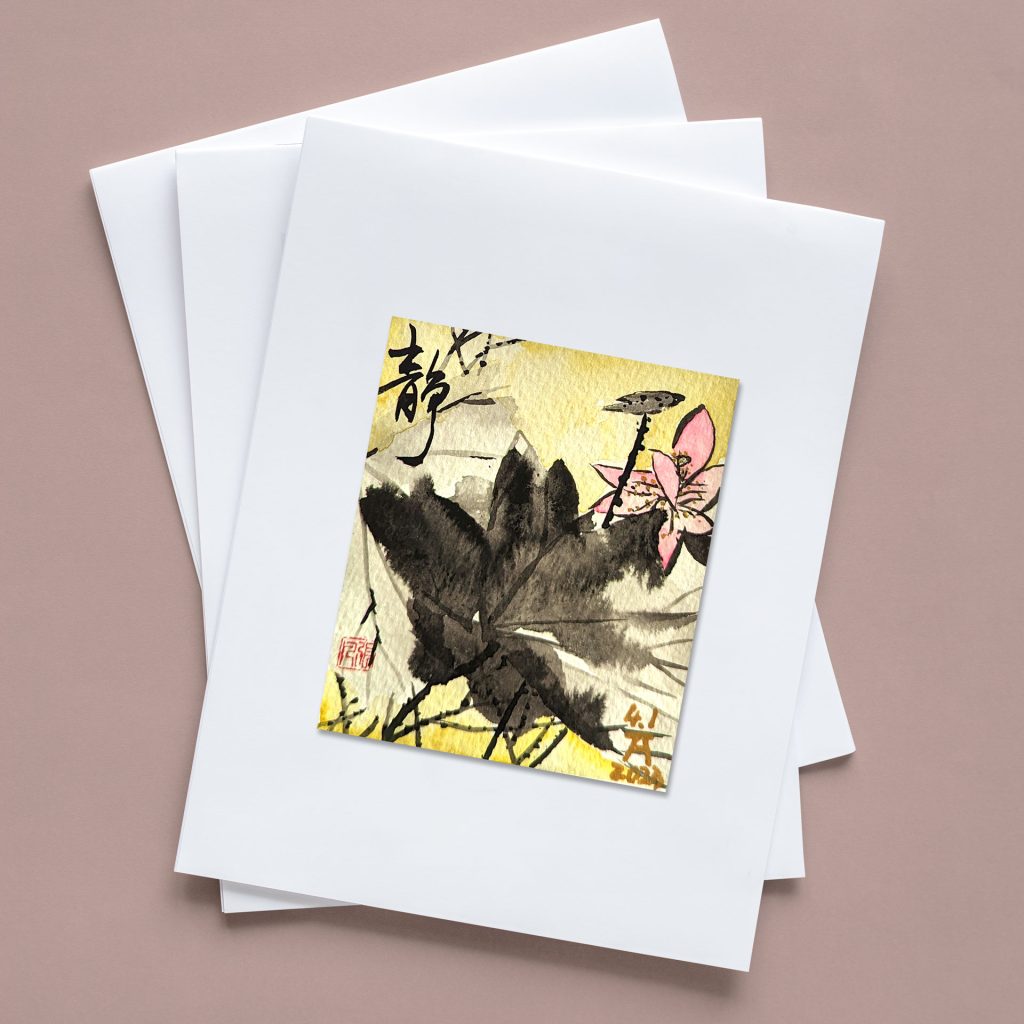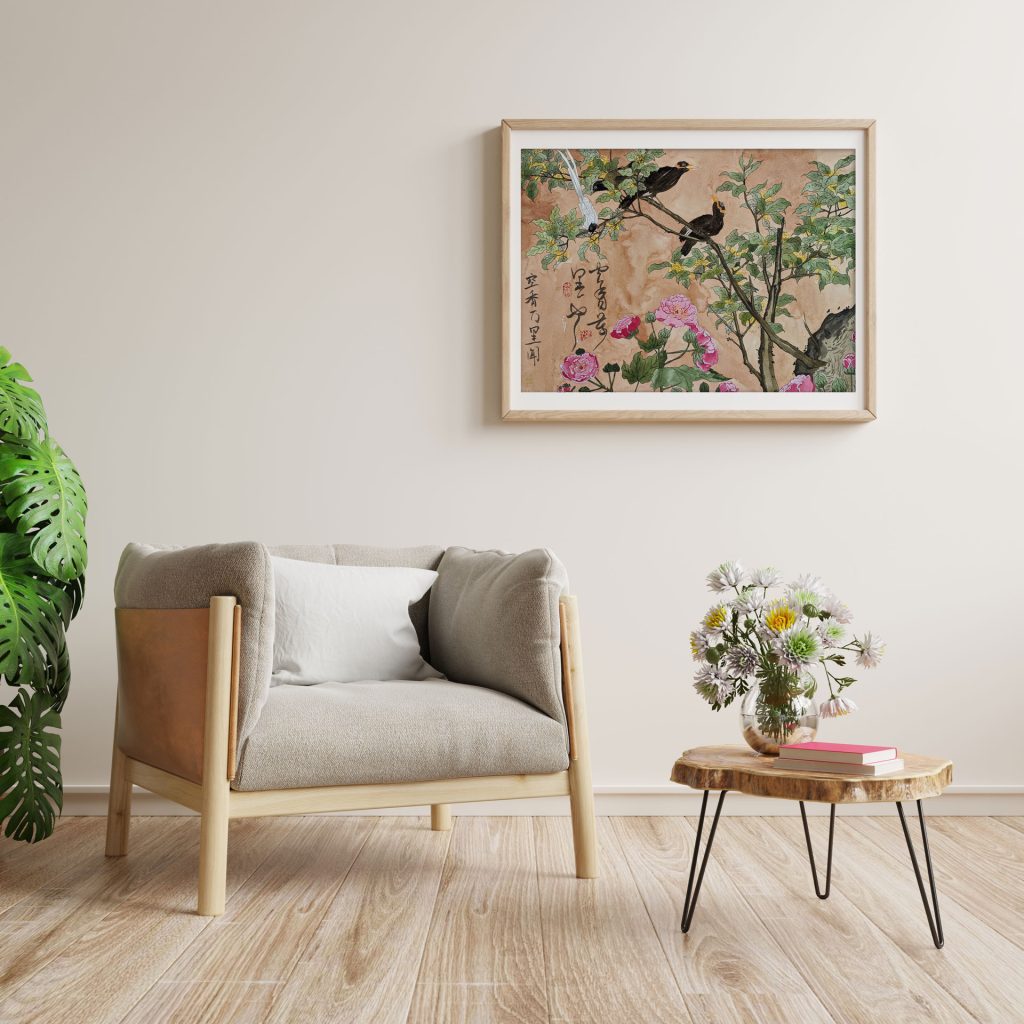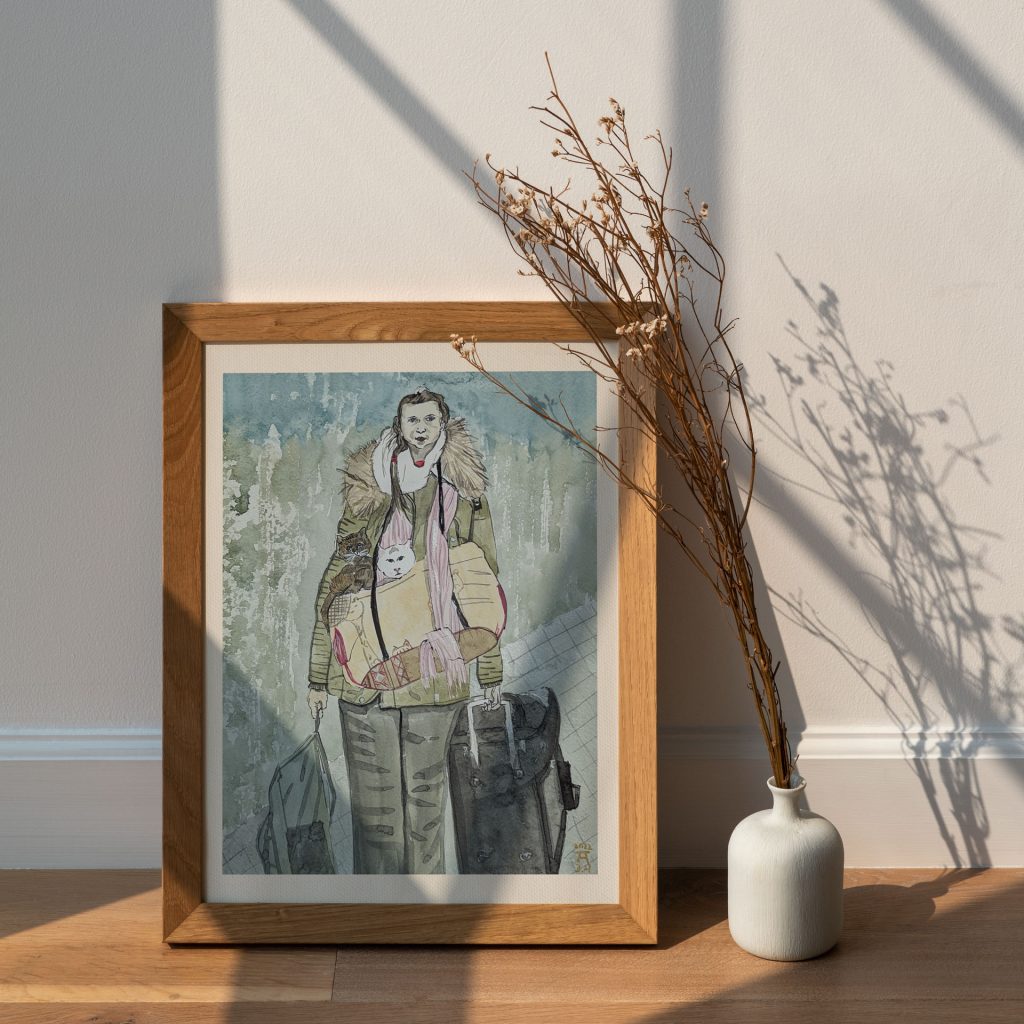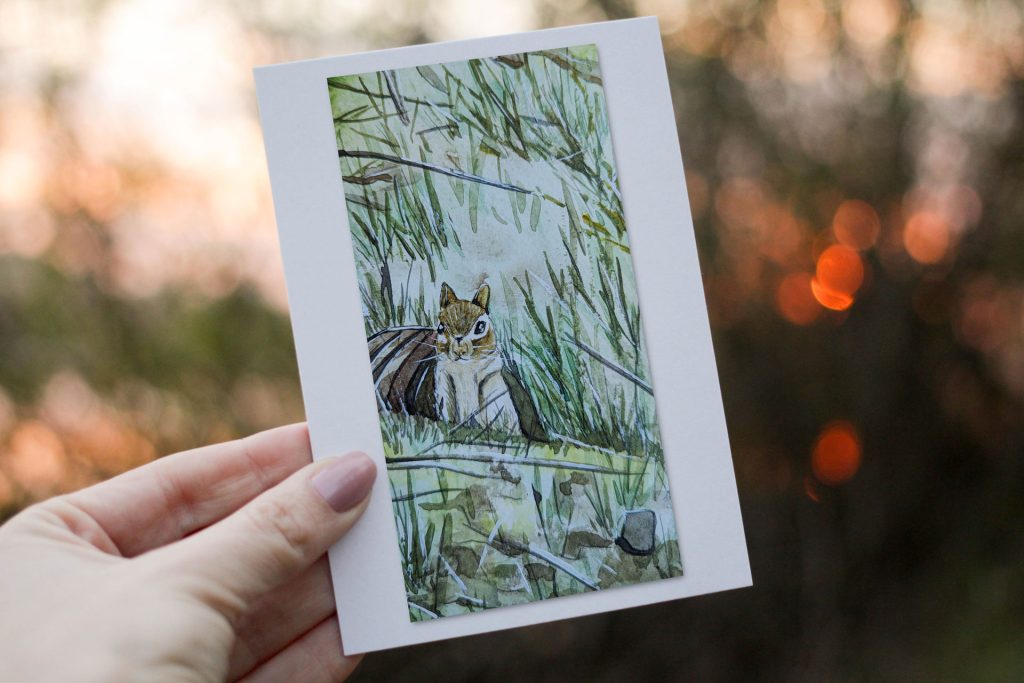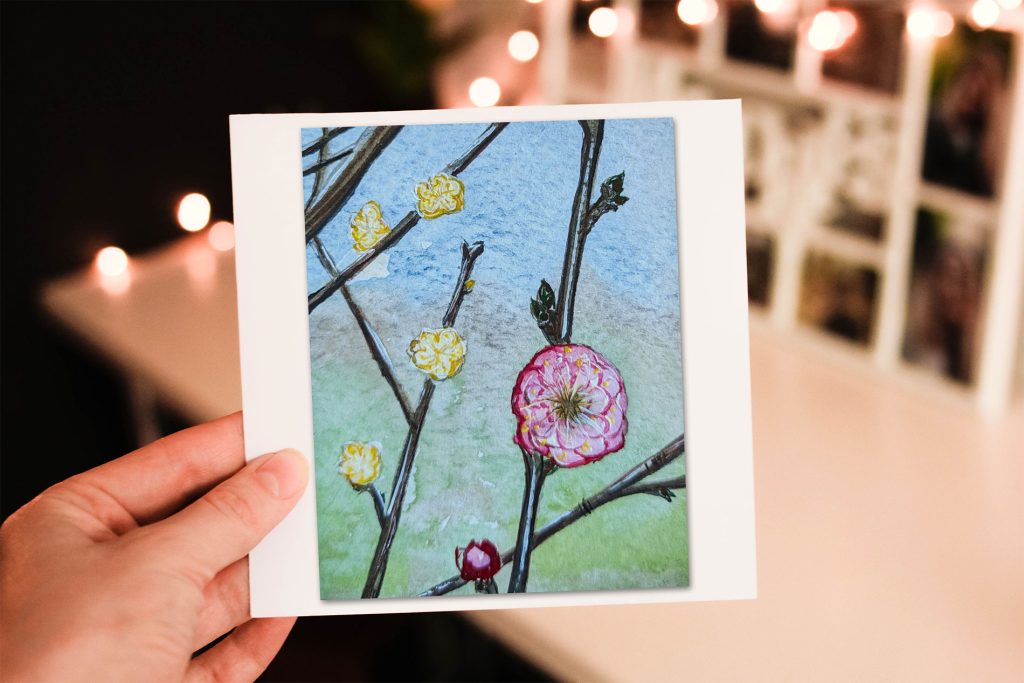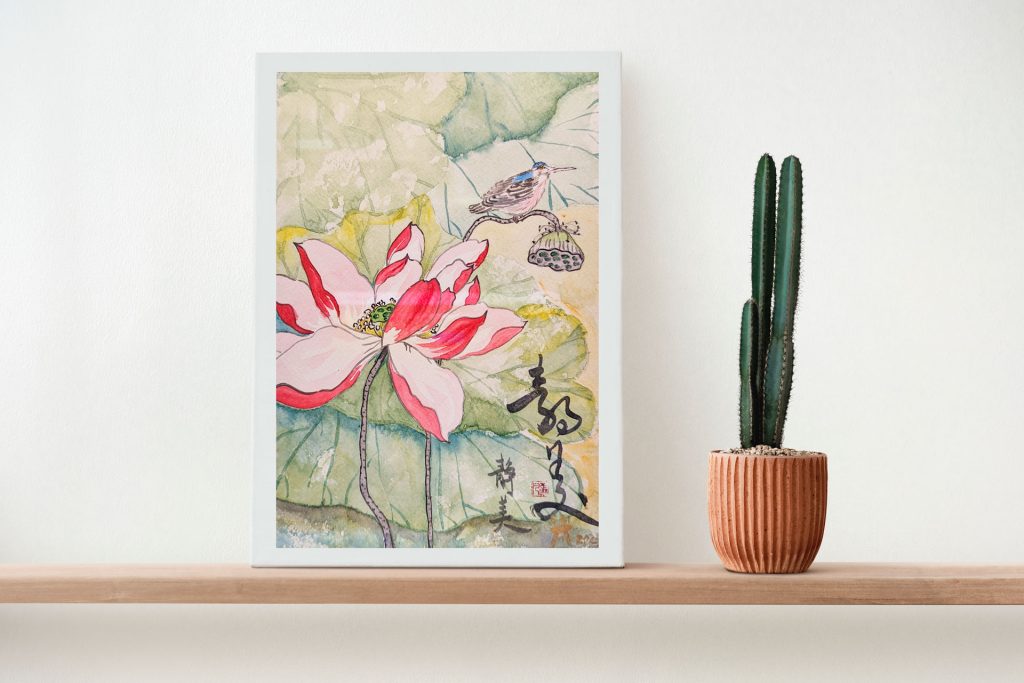While conducting my research on Chinese Birds and Flowers Painting, I came across a remarkable artwork called “Jade Hall Wealth and Noble Picture.” It is an exquisite scroll painted by Xu Xi during the Southern Tang Dynasty. Crafted from silk, it stands tall at 112.5 cm and spans 38.3 cm in width. The moment I laid my eyes on it, I was captivated by its opulent beauty. It left such a profound impression on me that I felt compelled to create my own rendition of it. This painting holds significant importance in the realm of Chinese art, and I would like to share more details about this renowned masterpiece.
The peony flower is commonly known as the symbol of wealth and prosperity. It is revered as the king of flowers. Since the Tang Dynasty, the peony has been beloved by people and frequently depicted by artists. The composition of this painting is filled with peonies, orchids, crabapples, and rhododendrons, set against a backdrop of stones. The branches, leaves, and birds are initially outlined with ink and then filled with colors. A wild bird is also depicted beneath the rocks. This seamless painting technique bears the influence of Buddhist art. During the Five Dynasties, flower-and-bird painting flourished, and Xu Xi and Huang Quan emerged as pioneers of this genre in the Southern Tang and Later Shu respectively. The Huang Quan School of flower and bird painting is characterized by the abundant use of colors, grand majesty, and vibrant vitality.
This artwork represents the “Pudianhua” style, known as the “鋪殿花” style. These works were specifically created to adorn the imperial palace and were referred to as “Pandian Flowers.” They were intended to decorate the splendid palace gardens. The gaps in the composition are filled with shades of blue-green, creating a vibrant and colorful picture. This transformation of natural scenery into decorative patterns is a distinctive feature.
Preserved examples of “Pudianhua” works are exceedingly rare, and this piece serves as an excellent representative of the style. The “Painting Records” document states: “In the southern region of the Yangtze River, Xu Xi and other painters depicted bright flowers and stacked stones on double-layered silk, complemented by herbs, birds, cicadas, and other elements, specifically created for hanging as ‘Pudian Flowers’.” This artwork showcases meticulous brushwork, rich colors, and a majestic presence, making it a remarkable representative of the “Pudianhua” collection held at the National Palace Museum in Taipei.

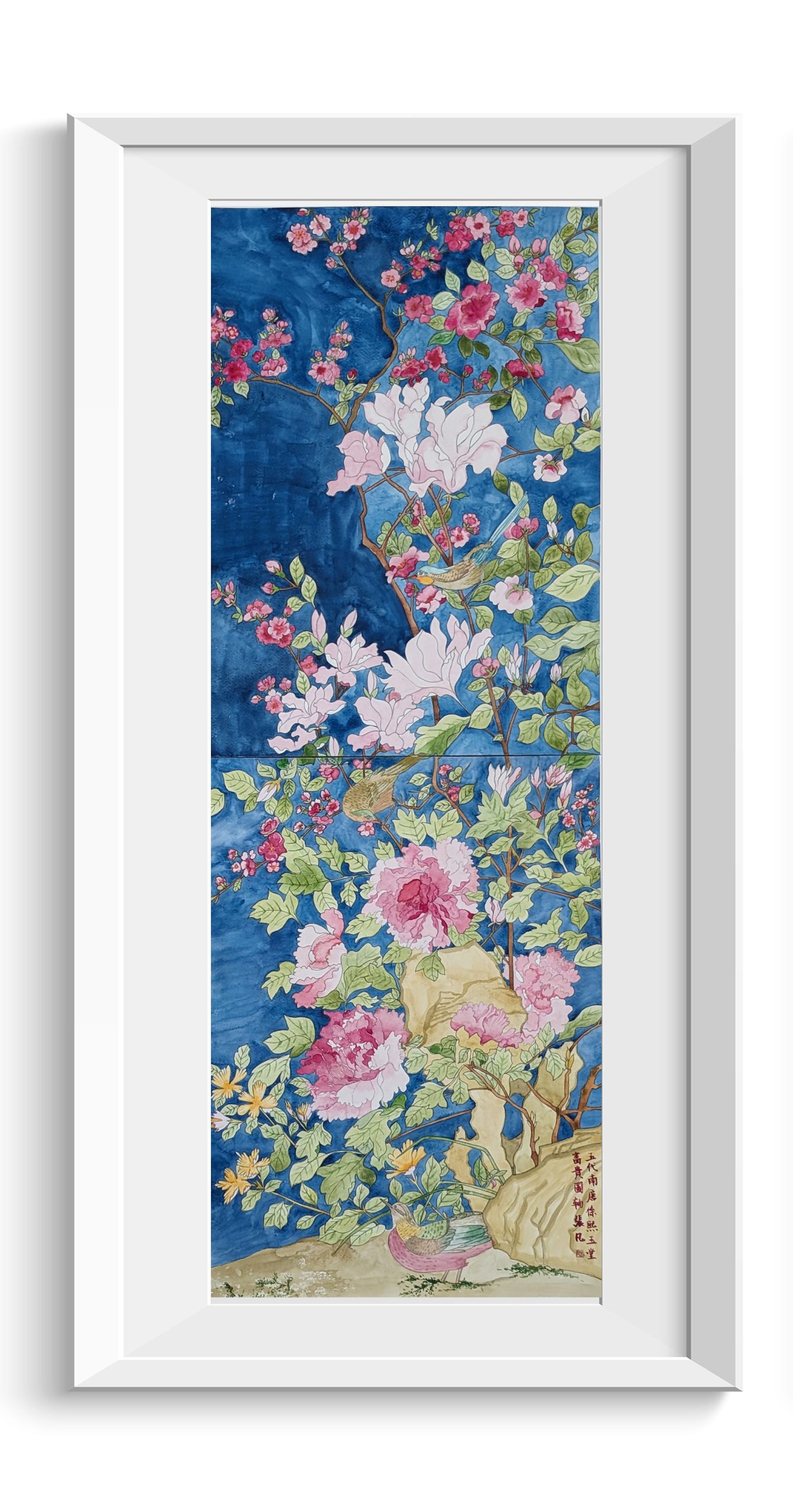
Chinese:《玉堂富贵图》南唐徐熙 轴 绢本 纵112.5cm 横38.3cm
牡丹花常被称为富贵花。它是花中之王。自唐代以来,牡丹就成了民间所爱的、画家常写的花卉了。牡丹与白头翁 (鸟名 )画在一起,叫做“玉堂富贵”了。图1中牡丹、玊兰、海棠、杜鹃,布满全幅,最后还用石青衬地。枝叶花鸟,用墨笔钩出轮廓,然后敷以彩色,湖石下还绘了一只野禽。这种满纸点染,不留隙地的画法,显然受了佛教艺术的影响。五代时后,花鸟画盛行,徐熙、黄筌二人,一在南唐、一在后蜀,同为后世花鸟画之祖。黄筌一派的花鸟画,用重色,气象华贵,非常艳丽;
本幅是北宋郭若虛所稱之「鋪殿花」畫風之代表作品。《圖畫見聞志》記載:「江南徐熙輩,有於雙縑幅素上畫叢豔疊石,傍出藥苗,雜以禽鳥蜂蟬之妙,乃是供李主宮中掛設之具,謂之鋪殿花。」足見「鋪殿花」式的作品,是為裝飾華麗的宮院而作。畫玉蘭、海棠、牡丹、石竹等。石旁一隻錦雞漫步,花、鳥均以雙鉤填彩方式描繪,工緻秀麗。空隙又以石青敷染,畫面填滿色彩穠豔的景物,將自然景物轉化裝飾圖案。
傳世鋪殿花作品稀少,本幅是北宋郭若虛所稱之「鋪殿花」畫風之代表作品。《圖畫見聞志》記載:「江南徐熙輩,有於雙縑幅素上畫叢豔疊石,傍出藥苗,雜以禽鳥蜂蟬之妙,乃是供李主宮中掛設之具,謂之鋪殿花。」本幅用筆工細,色彩豐色,具富麗堂皇的氣息,為故宮院藏鋪殿花作品的精彩代表作。
臺北國立故宮博物院
Tags:
#fanstanbrough #watercolor #homedecor #ChineseArt #BirdsandFlowersPainting #JadeHallWealthandNoblePicture #XuXi #SouthernTangDynasty #Pudianhua #PeonyFlower #SymbolofWealth #BuddhistArtInfluence #CulturalHeritage #art #artgift #artist
#tangDynasty #BirdsAndFlowers #Art4Ma #bostonart
#watercolor #oilpainting #acrylicpainting #craft #craftgift #giftcard #artcollectors #artmarket #artanddesign #asianart #japaneseart #ukiyoe #floatingworld #calligraphy #Ukiyoe #ChildhoodMemories #Innocence #PlayfulArt #ImaginationUnleashed #ColorfulCreations #CreativeWonder #ArtisticJourney #JoyfulLiving

